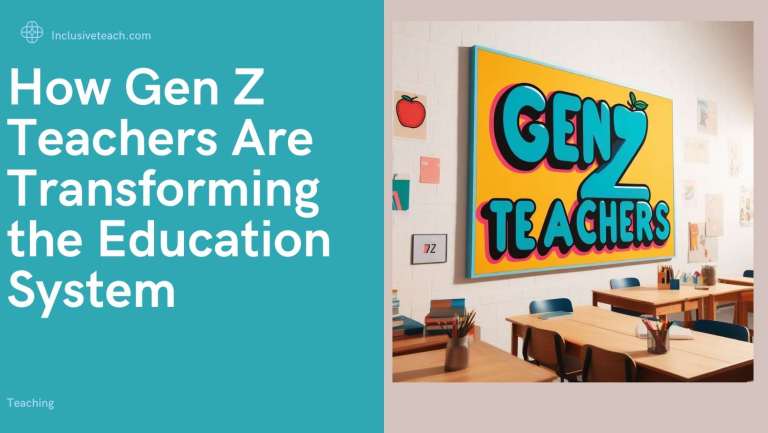Working Effectively with Teaching Assistants
Working Effectively with Teaching Assistants in Inclusive Classrooms
As the UK’s educational framework increasingly recognises the importance of personalised and inclusive learning, the role of Teaching Assistants (TAs) has become increasingly important. In the drive to provide a richer learning experience, the effective deployment of TAs can indeed make a significant difference.The EEF’s SEND Guidance Report highlights the potential of well-utilized TAs in mainstream UK education. If used effectively, TAs can significantly boost academic achievement, creating an environment that meets the learning needs of every individual student.
The Potential of Teaching Assistants to Improve Inclusive Education
Historically, many UK schools have been unconsciously trapped in an erroneous belief: more adults in the classroom will lead to more learning. The Deployment and Impact of Support Staff (DISS) project all the way back in 2004 challenged this notion, revealing that the mere presence of TAs does not equate to improved learning outcomes. The challenge lies not in the number of TAs, but in the strategy and implementation of their roles.
Maximising Impact: Collaboration Better Teachers and Teaching Assistants
Effective collaboration between teachers and TAs does not happen spontaneously. It stems from strategic planning, effective training, and role clarity. A major finding from the EEF’s report is that TAs should be used to supplement, not replace, teachers’ efforts. This reaffirms the importance of maintaining a clear distinction between the roles of teachers and TAs.
Effective collaboration between teachers and TAs is a complex process that requires careful planning and execution. It is important to have a clear understanding of the roles and responsibilities of each party, as well as the goals of the collaboration. TAs can provide valuable support to teachers, but they should not be seen as replacements for them. Instead, they should be used to supplement teachers’ efforts and help them to reach all students.
This can be done by providing one-on-one support to students, working with small groups, and assisting with classroom management. When TAs are used effectively, they can have a positive impact on student learning.
These are the essentials for effective collaboration between teachers and TAs:
- Clearly define the roles and responsibilities of each party.
- Establish regular communication channels.
- Share information and resources.
- Collaborate on lesson planning and assessment.
- Provide feedback and support to each other.
- Celebrate successes together.
TA Training and Support
A largely overlooked aspect of TA deployment is adequate training and ongoing support. A TA who is thrown into an unfamiliar environment without formal training can hardly be expected to improve the learning experience. TAs, as guardians of the most receptive minds, our SEN childrens, need a deep understanding of the needs of their students. They should be able to go beyond differentiated instructional techniques to meet the varied learning needs within a single classroom or across the school.
Formulating a Cohesive Strategy for Deploying TAs
The successful integration of TAs into the classroom environment is a leadership responsibility. Developing a school-wide strategy that outlines TAs’ roles, and responsibilities, and provides necessary training and support is no longer a luxury but a necessity.

Enhancing Teacher-TA Collaboration for Effective Teaching
Daily discussions, regular feedback, and time for collaboration between teachers and TAs lay the foundation for a fruitful educational partnership. These interactions ensure that lessons are planned effectively, with shared objectives and seamless division of roles among the parties involved.
Capturing the Value Added by Teaching Assistants
Success is not just about implementing the right strategies, but also about evaluating their effectiveness. Consistent monitoring and feedback at the end of each term encourages reflection not only on student progress, but also on the TA’s contribution to it.In summary, the effective use of TAs in UK classrooms depends heavily on strategic deployment and robust collaboration between teachers and TAs. With competent leadership guiding this collaboration, TAs can become a significant pillar in strengthening the UK’s education system, thereby providing every learner with an opportunity to thrive.
Case Study: Effective Teamwork with Teaching Assistants
This is a case study based on the effective use of a teaching assistant within a mainstream classroom. You can find out more detail in this video from the Education Endowment Foundation.
- Daily discussions at the end of the day and morning help to ensure that teachers and teaching assistants are on the same page and can coordinate their efforts. This is because it allows them to share information about what happened during the day, what they plan to do the next day, and any challenges they are facing. It also gives them a chance to ask each other questions and get feedback on their work.
- The deployment process clarifies job roles and ensures that everyone knows what is expected of them. This is important because it helps to prevent misunderstandings and ensures that everyone is working towards the same goal. It also helps to ensure that everyone is aware of their responsibilities and that they are being held accountable for their work.
- Teachers and teaching assistants need time to meet and collaborate effectively. This can be done through PPA time, planning sessions, and other means. This is important because it allows them to share ideas, plan lessons, and provide feedback on each other’s work. It also helps to build relationships and trust between teachers and teaching assistants.
- Strong relationships and mutual respect among teaching assistants are essential for effective collaboration. This can be fostered through quick feedback, dialogue, reflection, and discussion. This is important because it helps to create a positive and supportive work environment. It also helps to ensure that everyone is comfortable sharing their ideas and feels valued and respected.
- Time management and communication are crucial for successful classroom instruction. This includes scheduling daily reteaching sessions for struggling students and providing time for assessments and feedback at the end of each term. This is important because it helps ensure that all students get the support they need to succeed. It also helps to ensure that teachers can track student progress and make necessary adjustments to their instruction.
Retaining Experienced Teaching Assistants in The Classroom
This is essential, especially given the current post-pandemic recruitment issues facing schools in the UK. The Teaching Assistant job is difficult, you may well be 1:1 with some really challenging pupils. You may be lone-working, out of the class or even expected to step up and cover. TA’s in special schools will be giving medication, following OT or Physio programmes. We need experienced Teaching assistants who know their stuff.
8 Suggestions for Improving TA Retention Rates
- Provide professional development opportunities, such as training workshops, webinars, and courses, so that TAs can continue to develop their skills. This shows that you invest in their growth.
- Create career progression pathways, such as clear promotion opportunities and salary increases, to recognize tenure and expertise. This gives experienced TAs something to aspire towards.
- Improve working conditions by ensuring reasonable workloads, adequate planning time with teachers, and input into decision-making. This will help to prevent burnout.
- Offer competitive compensation by benchmarking pay rates and benefits to attract and retain top talent. Experienced TAs expect fair pay that reflects their value.
- Build an inclusive school culture by making TAs feel respected, valued, and part of the school community. This will help to foster strong relationships between staff and leadership.
- Give recognition, from simple gestures of appreciation to awards, to consistently recognize experienced TAs’ dedication and excellence.
- Listen to feedback by regularly seeking input from TAs on how to improve their roles. Implement suggestions where possible.
- Support wellbeing by encouraging work-life balance, self-care, and mental health support. This indicates that you care about TAs holistically.






